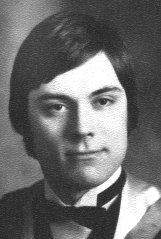Douglas W. J. Goodyear

B. Sc. Honours Thesis
Paleogeography and Reservoir Development in the Upper Devonian Crossfield Member, Stettler Formation, South-Central Alberta.
(PDF - 25.1 Mb)
Late Devonian deposition of the Crossfield Member of the Stettler Formation occurred proximal to the margins of a broad, shallow epeiric sea. The very slight depositional slopes encountered created sharp variations in water circulation and agitation resulting in the orientation of sedimentary environments roughly parallel to the north-south paleoshoreline. Carbonate and evaporite sediments formed from two transgressive-regressive cycles. A paleogeographic reconstruction shows an open marine environment in the west and the development of a shoreline fringing the eastern edge of the map area. Within this setting fore-reef, reef, back-reef tidal flat, back-reef lagoon, playa lake and sebkha environments developed.
The configuration of the Crossfield natural gas reservoir is a direct product of preferred porosity developments during early and late diagenesis in subtidal carbonate lithosomes. In the Crossfield East gas unit porosity is associated with reefal and related lithofacies formed during the first marine transgression. Pinpoint "birdseye" porosity has also developed here as a consequence of emergence of the are during marine regression. In the Lone Pine Creek gas unit porosity is associated with the repeated emergence of portions of the back-reef lagoon. This condition led to the profuse development of laminoid fenestral porosity at wells simultaneously undergoing probable rapid subsidence.
Keywords:
Pages: 114
Supervisor: Paul Schenk



